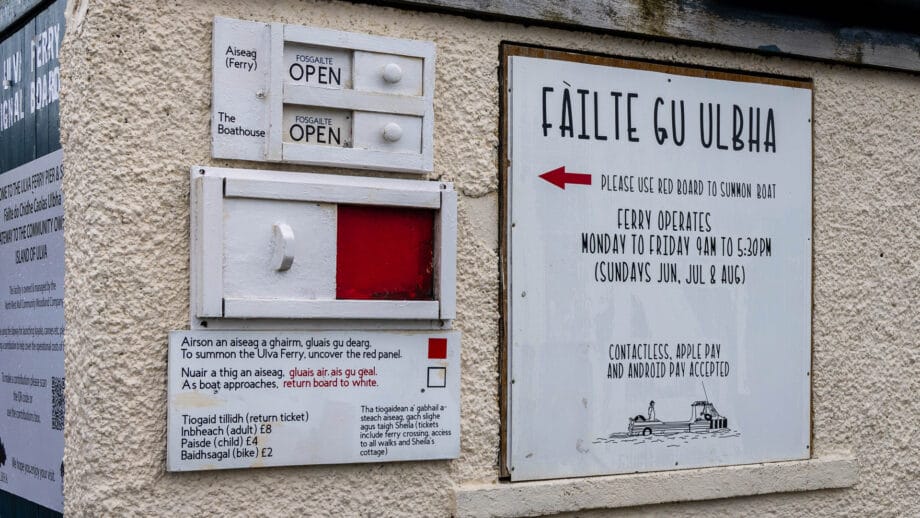The island of Ulva lies off the west coast of the Isle of Mull. Although the crossing on the small pedestrian ferry only takes a minute, it feels like leaving civilisation behind.
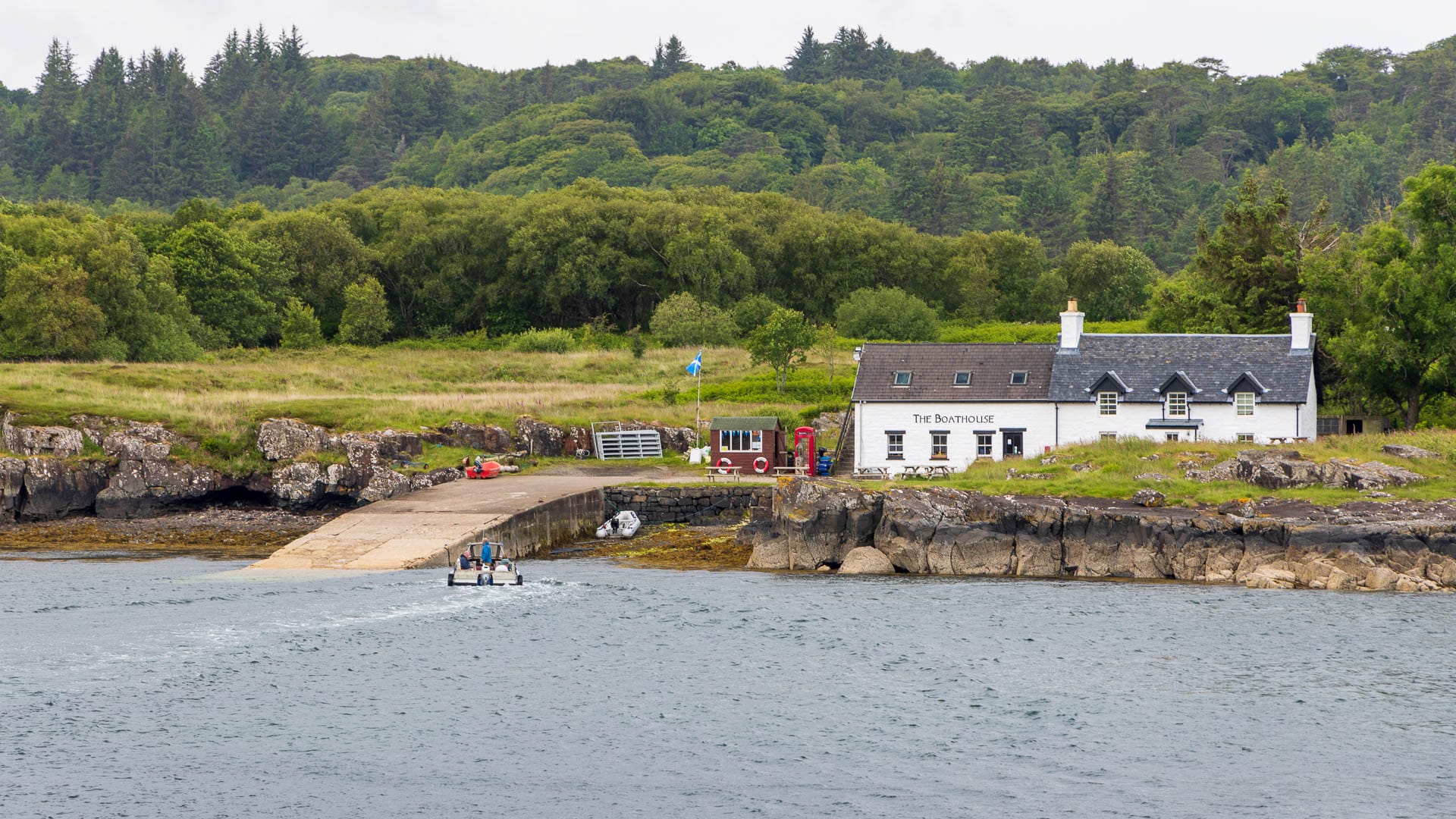
Ulva is for nature lovers, for people who enjoy walking and immersing themselves in the past. There are no tracks or roads on the island near Mull, and certainly no cars. Instead, a number of hiking trails lead past the attractions, into the wilderness and along the coast.
Ulva is worth a visit if you are visiting the island of Mull for a longer period of time or have travelled there frequently. Most of the attractions on Ulva are in the far west of the island. Here is an overview:
Ulva attractions
Right by the harbour is the Boathouse Restaurant, which serves seafood and other meals.
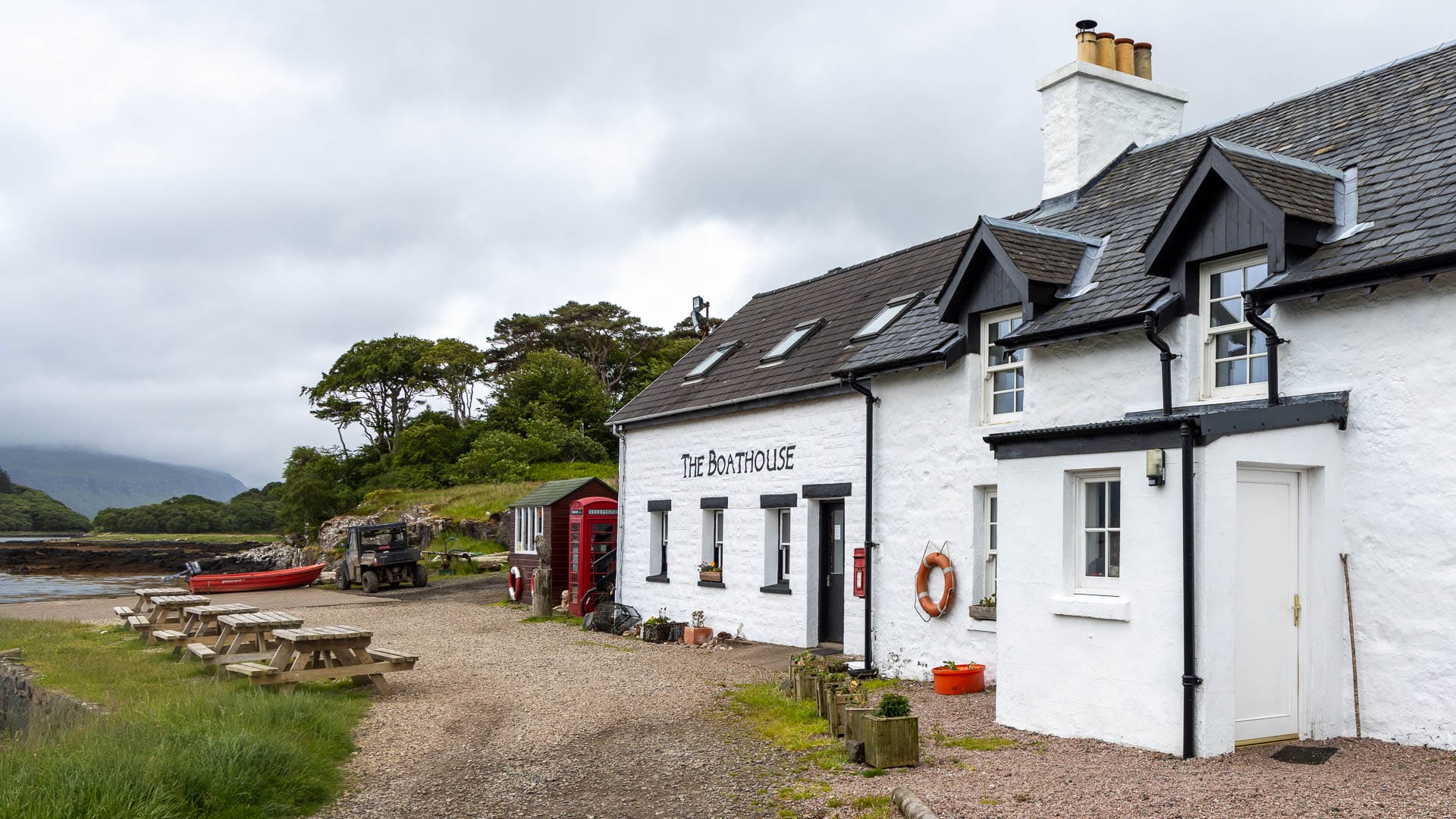
A few steps further on is Sheila’s Cottage, an old blackhouse with a thatched roof. The interior shows the furnishings and living conditions of the inhabitants from past centuries. Sheila MacFadyen last lived here, hence the name of the house. The cottage is also home to the island’s Heritage Centre.
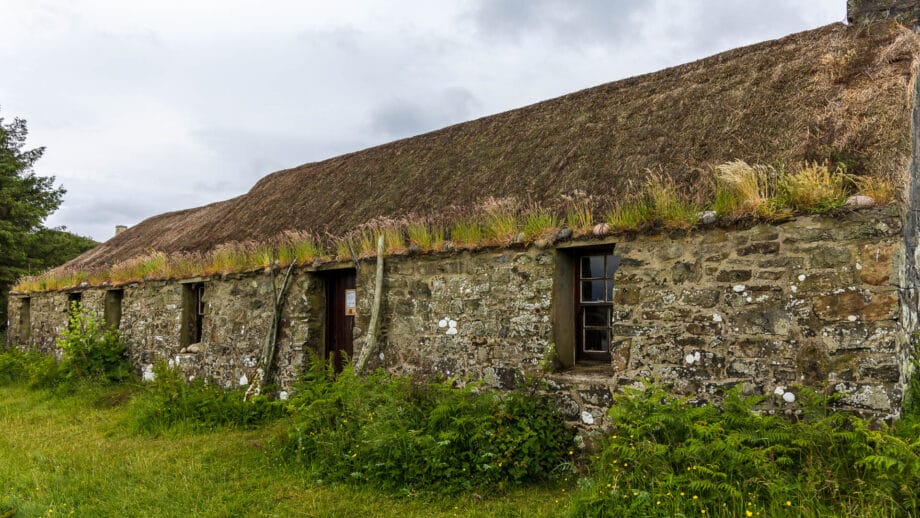
About 800 metres from the harbour is the Walled Garden. Walled gardens were protected from the wind and weather, and this is where the owners of the island used to grow vegetables. Today, the inhabitants of Ulva are trying to restore the garden to its former splendour.
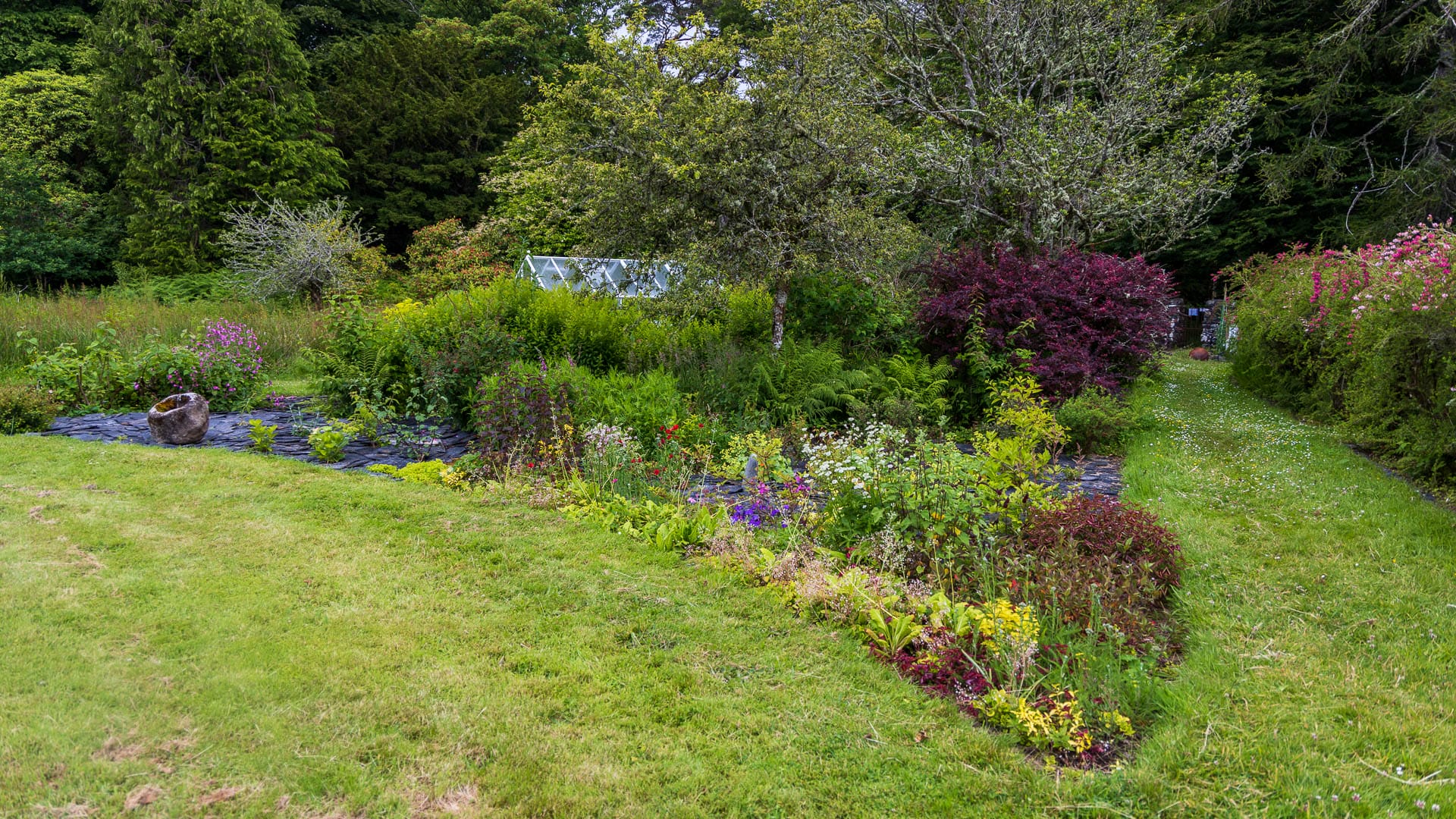
Ulva House is currently empty and can only be admired from the outside. It looks older than it actually is, as it was only completed in 1955. But that doesn’t make it any less valuable. For one thing, it incorporates parts of the older house that once stood here before it burnt down. Secondly, the well-known Scottish architect Leslie Grahame Thomson (later MacDougall) was in charge of its construction. Ulva House is therefore regarded as an important example of post-war building in Scotland. The island community plans to develop it as a visitor centre, cottage and meeting facility.
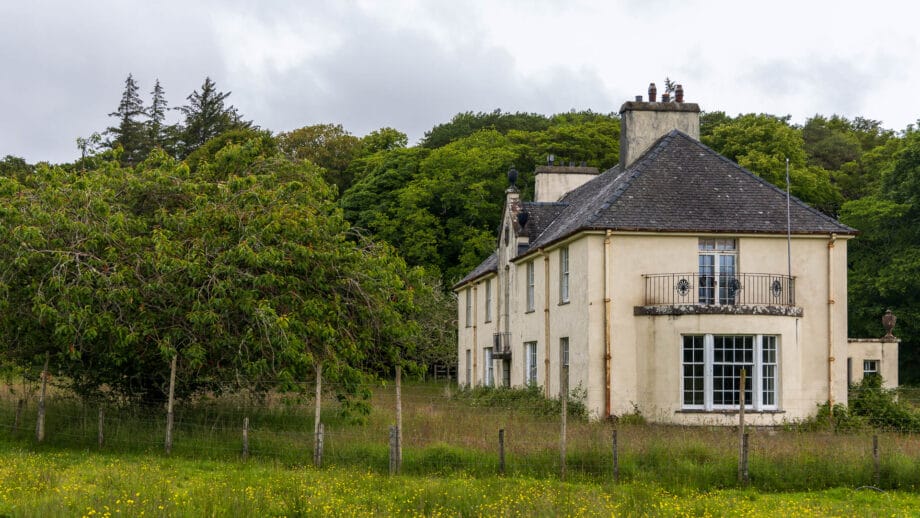
These are just some of the attractions close to the harbour. But the island can only really be explored on foot.
Hike: Livingstone’s Walk on Ulva
Livingstone’s Walk is a nature hike that takes in more historical sites and magical scenery. It is about nine kilometres long with some wide paths, but also narrow paths with stones and mud. Hiking boots are therefore a must, as is a certain level of fitness.
Overview map Livingstone’s Walk on Ulva
The tour in detail
The walk starts at the Boathouse and Sheila’s Cottage. From there, a path leads into the island and we keep left at the larger fork. On the right is a pasture, often with Highland cattle on it, behind which rises one of the five churches on Ulva, the Parliamentary Church.
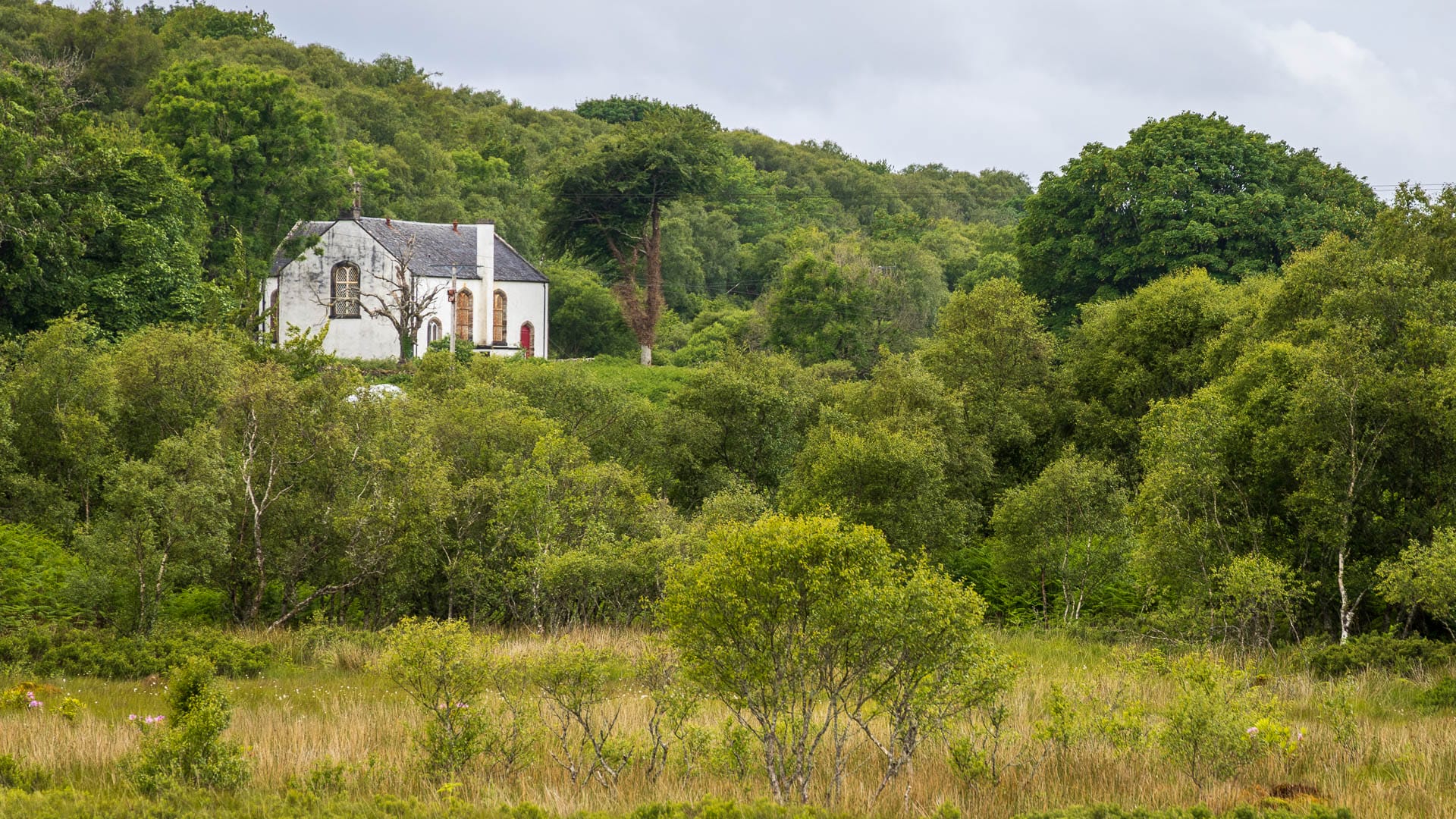
We reach some farm buildings. Here we turn right, the path climbs through the forest and soon passes a water basin and a gate. Behind the gate, the forest opens up, and we have a wonderful view over the island’s plateau.
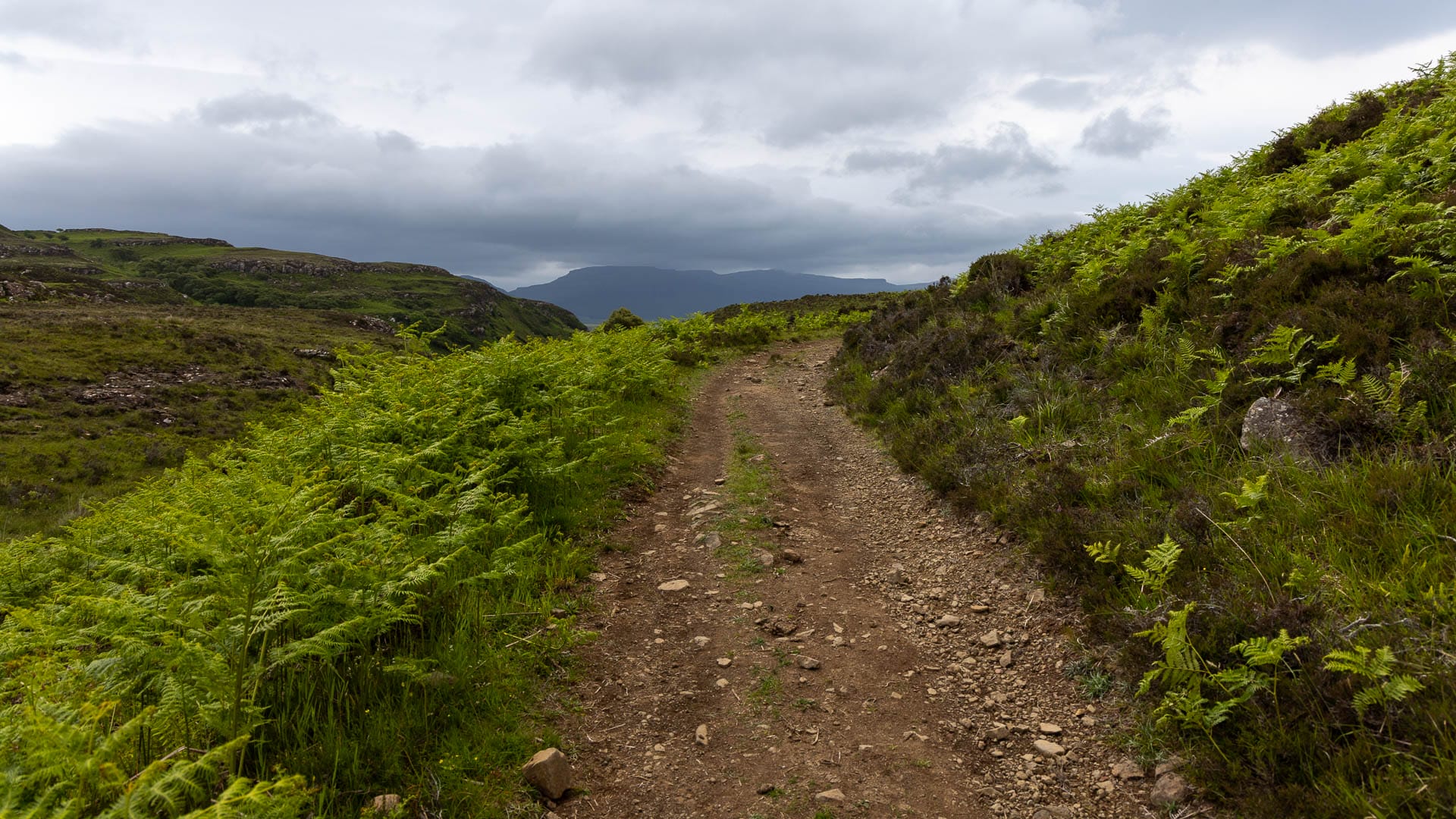
At the next fork, we have to turn left. The other path otherwise leads to the neighbouring island of Gometra. After a while, a ladder appears with an arrow next to it. Be careful when crossing, some rungs may be loose.
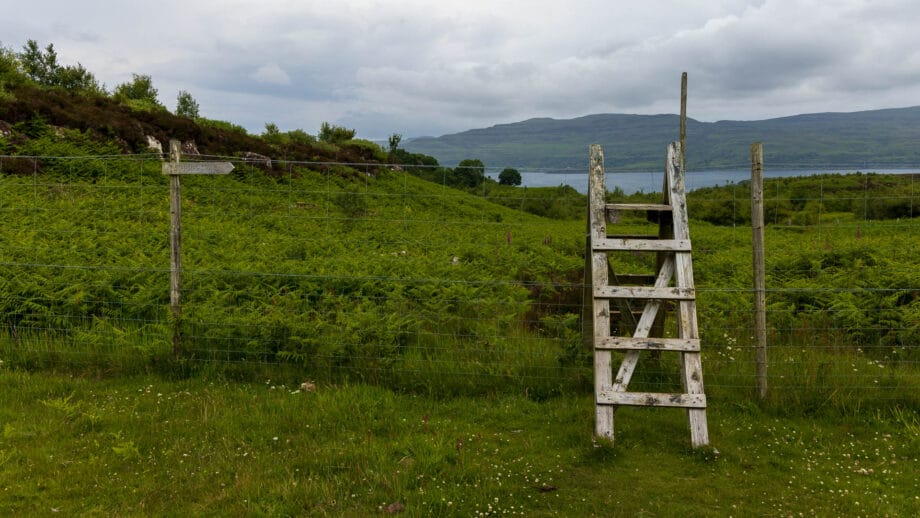
Depending on the time of year, the ferns here can be very tall. However, a path is usually mown reasonably clear for visitors to the stone. A certain area around the stone is also kept clear.
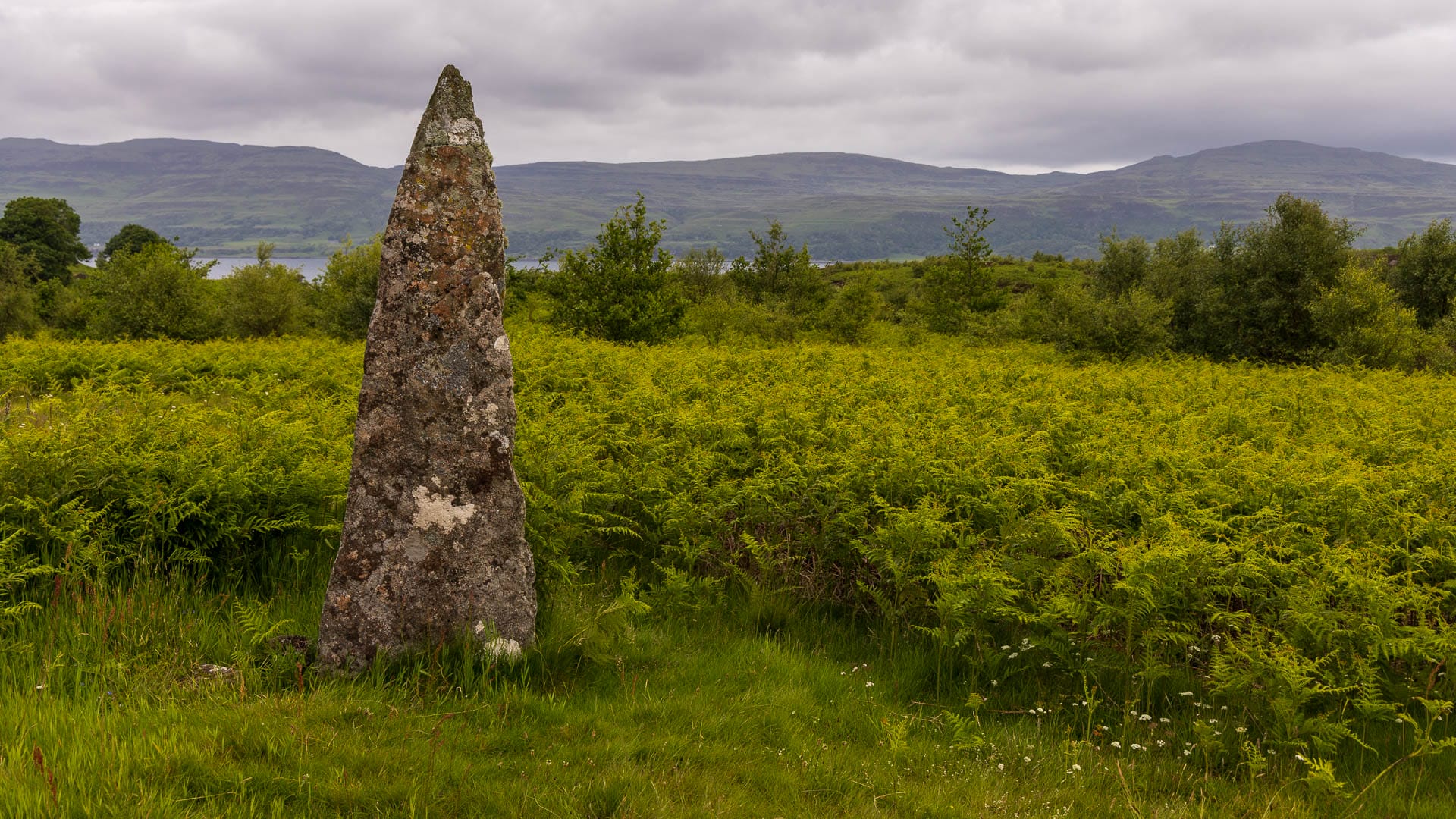
When we have had our fill of the stone, we go back over the fence onto the path. There, however, we quickly turn left down into a valley, at the end of which trees can be seen.
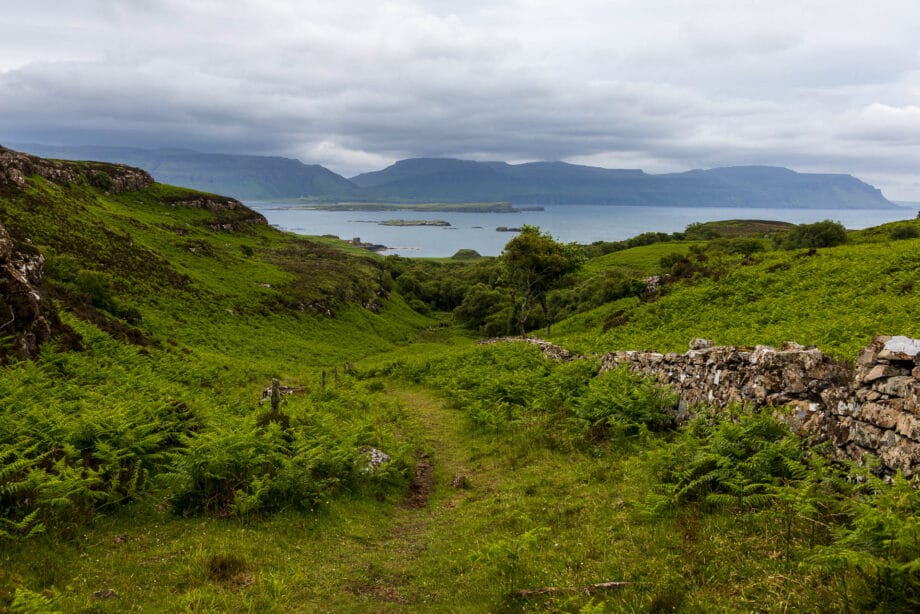
We walk through the trees. As soon as we leave them, we can already see the ruins of houses in the distance. These are the remains of Livingstone’s Farm.
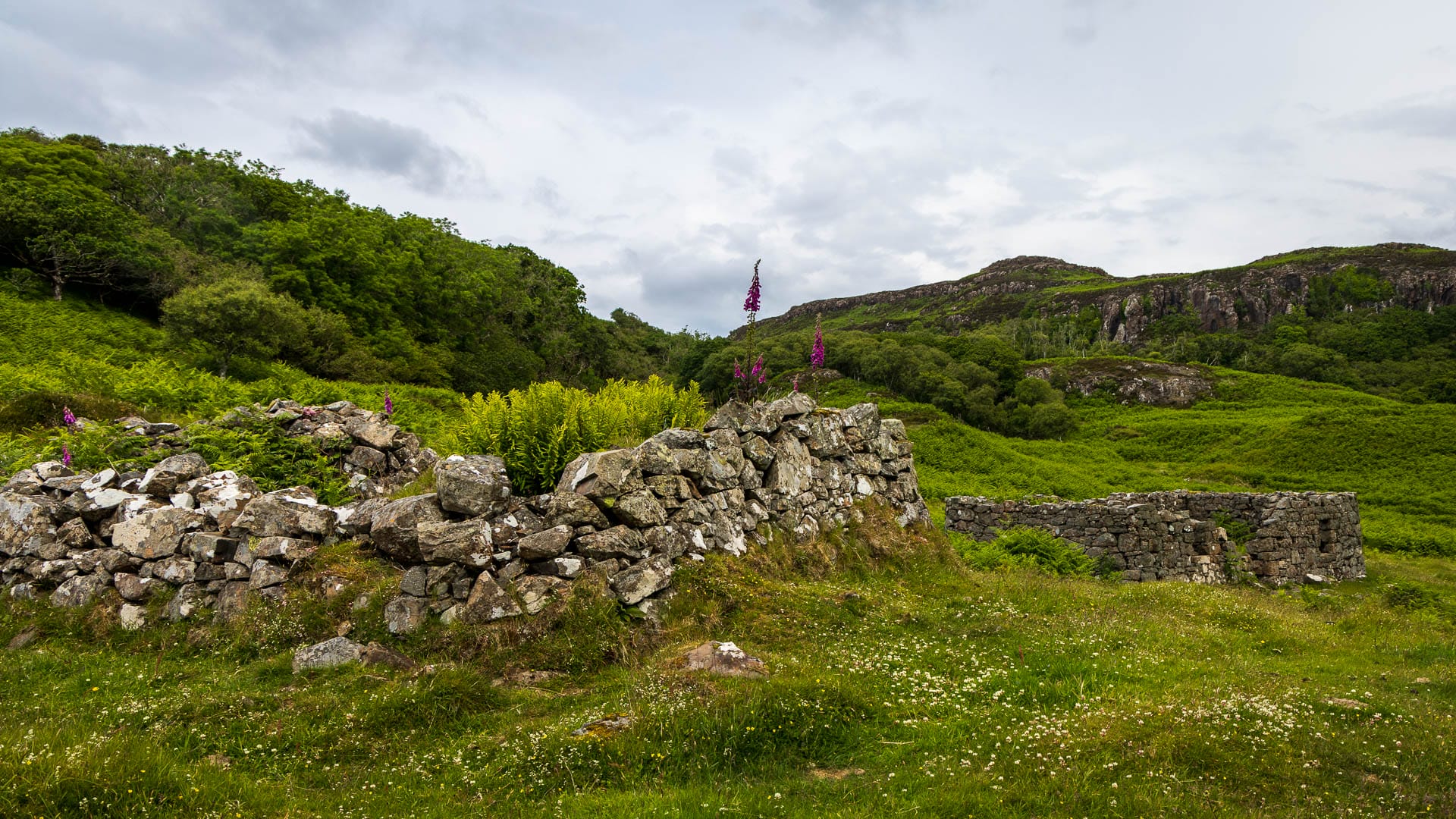
David Livingstone’s grandparents are said to have lived in these buildings. David Livingstone was a Scottish explorer of Africa who discovered Victoria Falls and set out in search of the sources of the Nile.
Posts with white markings now indicate the way ahead. They next lead to Livingstone’s Cave, which requires a small climb. Hunters and gatherers from the Stone Age lived here.
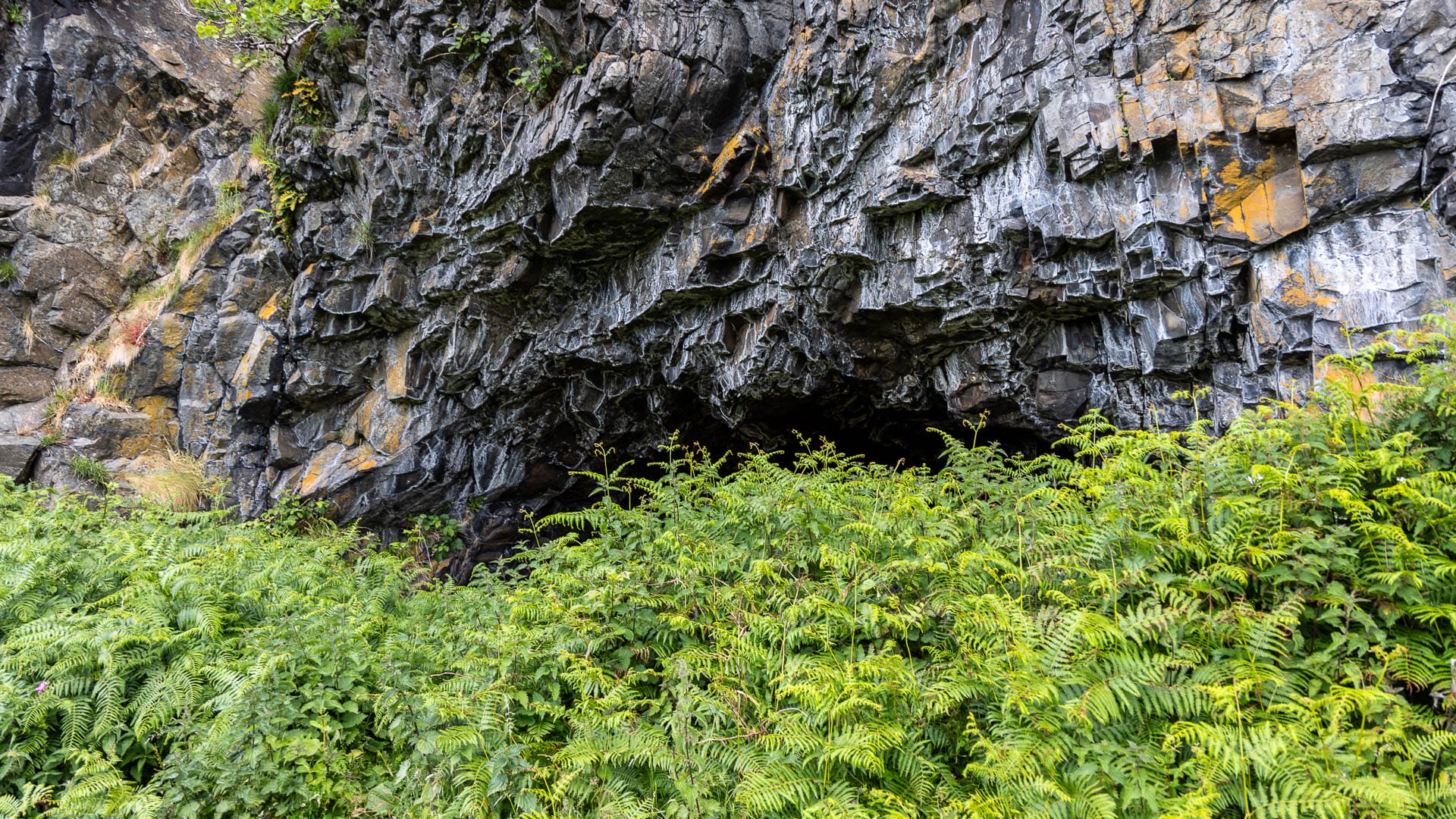
Back on the main path, we head to the coast and follow it. As we do so, the cliffs appear, which are very reminiscent of the structures of Fingal’s Cave on the island of Staffa. It consists of the typical hexagonal lava columns.
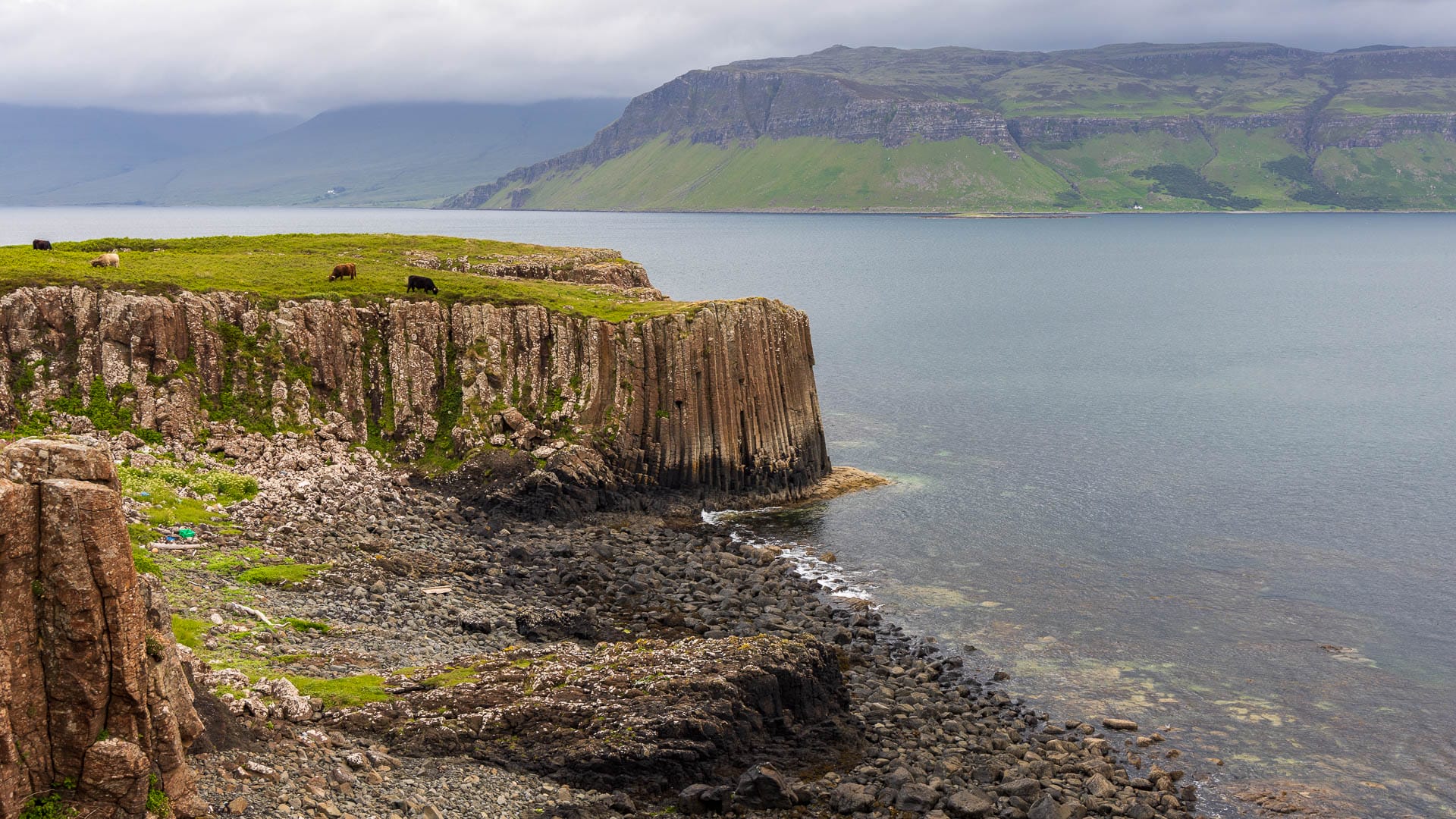
A little further on, the path plunges into a forest again. And this is the most difficult part of the route. Because here it becomes narrow, very stony and sometimes slippery due to the mud. Nevertheless, the forest is magical.
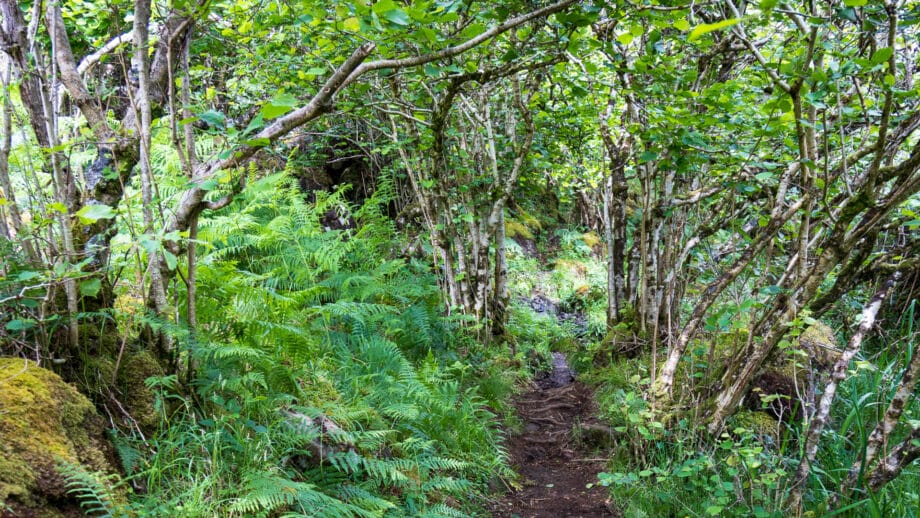
We leave the forest and pass through another gate. We now reach the farm area and are almost back. But first we pass Ulva House and the Walled Garden. Then it’s back to the Boat House.
Knowledge & history about Ulva
The island is about 11 kilometres long and 4 kilometres wide – but only if you count the neighbouring island of Gometra. It is actually two islands connected by a stone bridge.
Ulva is the English pronunciation of the Gaelic name Ulbha. However, this in turn is only the Gaelic pronunciation of the Norse name Ulv-oy. The name either comes from a former inhabitant called Ulf, or it means wolf island (the name Ulf also means wolf).
The first traces of humans can be traced back 7,000 years. Waste from hunter-gatherers was found in Livingstone’s Cave, for example.
Later, Picts, Vikings and Gaels lived here. The Macquarie clan claimed the island as their own. At its peak, the population was around 600 people in 16 villages. But here too, the Highland Clearances and the potato blight, including the famine of 1845, depopulated the island: in 1889 only 53 people lived here and today there are only 16.
The positive side: things are looking up. Not only have the residents carried out a community buyout with the help of a foundation – Ulva now belongs to the community and not to a single owner. They also have a development plan that includes new flats in existing and new houses.
Directions
With satnav: “PA73 6LY” will take you close to the car park.
Without sat nav: Take the B8073 road along the west coast until you see signs for the ferry. Turn off there. The public car park is a little further on. Walk the rest of the way to the landing stage.
Call the ferry: There is a wooden panel with sliders on the building on the left. Position the slider here so that the red side is visible. Then the ferry from Ulva will come across. When it arrives, close the red part again. Payment is usually only made on Ulva at the little house. Card payment is possible.
